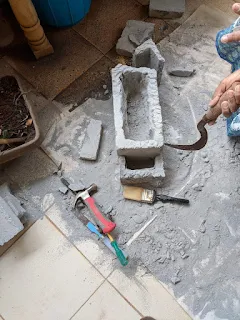Tripod setting for Photo shoot:
Tripod is an important instrument.in photography, if you place your camera on a tripod, , you can easily adjust shutter speed and time with out any jerks. Small jerk also makes your photo shaky without any clear, sharp picture. With Tripod we can adjust of the height the camera with the same level of the plant with its position and angle. Fix camera or mobile in tripod and adjust the height of tripod.
camera focus point and should match with pot level. The plant trunk base should and the camera eye will be in the same level. So plant will be visible as it is. we can get true image with out any Parallax error.
If you are looking at plant from an angle the picture you are getting wont be perfect , In out come photo the plant's image will be at an angle and trunk line can be covered with branches. so its not proper way of getting a good picture.
In the above photograph the focus of camera is going above canopy of the plant. So in out come image of the plant the trunk line looks thin and young.
camera Angle focus is from the Above the plant


Focus of camera in first photo it is on left side, and in second photo it is on right side
The placement of tripod with camera and plant should be in 180 degrees line. If tripod is on right side or left side the image we are getting is not a actual image.
Tripod helps to take good photos when there is minimum light in the room, that time we need more shutter speed. When using camera with hand slight movement also reduces shutter speed, resulting in blur or grainy images.If camera is placed on tripod there wont be any movement of the hand, On tripod minimum amount of movement resulting best photos of Bonsai plants. If you dont have tripod there many home made tripod videos are there online, you can check them. you can make your own. The main use of tripod is stability for camera with least motion and best photo shoot..
To be continued in next posts with other tips like tripod placement and exposure etc.....



















































